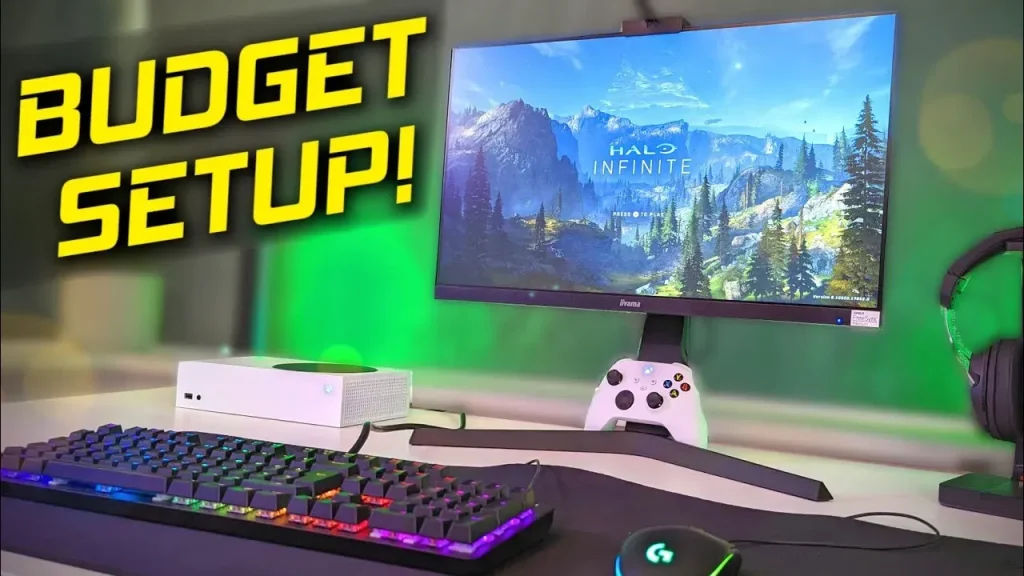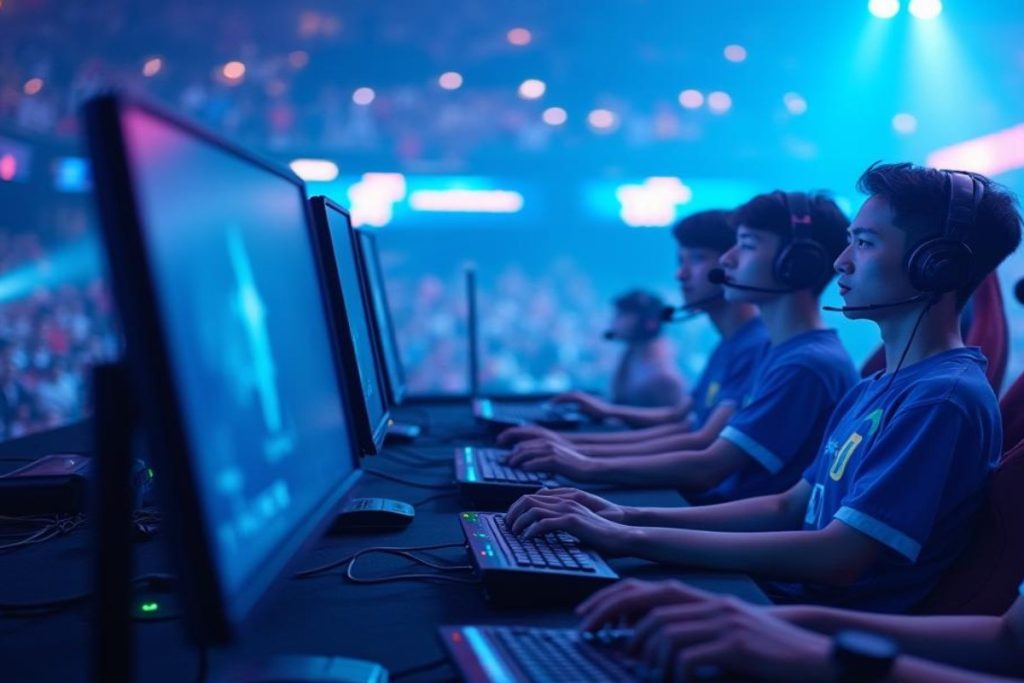Budget Gaming Setup doesn’t have to mean compromising on performance or visuals. With a smart build, an affordable gaming PC lets you enjoy modern titles at smooth settings without sacrificing style. This guide breaks down practical price ranges and upgrade paths to create an entry-level gaming setup that fits under $1,000. Pair it with a budget gaming monitor to maximize value and ensure responsive, immersive gameplay. By focusing on core components, peripherals, and balanced upgrades, you can achieve a premium-feel experience without the premium price tag, aligning with the best budget gaming PC under $1000 across top guides.
For readers seeking a cost-conscious gaming rig, consider a value-driven PC build that prioritizes balanced performance and upgrade potential. Rather than chasing ultra settings, look for a budget-friendly configuration that pairs a capable CPU and GPU with ample RAM and fast storage. A practical setup keeps peripherals affordable yet reliable, with a compact display and a responsive keyboard and mouse that offer comfortable control. This approach embodies the broader idea of an affordable yet scalable gaming environment designed to grow as needs and prices shift.
Budget Gaming Setup: Quality 1080p Performance Without the Premium Price
Building a Budget Gaming Setup doesn’t require compromising on visuals or smooth gameplay. With a target under $1,000, you can assemble an affordable gaming PC that pairs a capable mid-range CPU with a discreet GPU, delivering a reliable 1080p experience for most titles. Think Ryzen 5 5600-series or Core i5-class processors alongside a budget-friendly graphics card such as RTX 3060 or RX 6600, paired with 16GB of DDR4 RAM and a fast NVMe SSD. This aligns with the spirit of an affordable gaming PC that punches above its weight and mirrors what many would call the best budget gaming PC under $1000.
Peripherals matter just as much as the core system. A 24-inch budget gaming monitor with 1080p resolution and at least 75Hz refresh helps you feel the action with low input lag and crisp colors. Couple this with a cheap gaming peripherals kit—and a keyboard with tactile feedback and a responsive optical mouse— and you get a responsive, comfortable setup without breaking the bank. The right monitor and input devices can often make your Budget Gaming Setup feel premium despite the modest price tag.
To keep costs sensible, consider practical upgrades over time: start with a solid 500GB NVMe SSD for fast boots and a secondary drive for game storage, and plan for a future GPU or RAM upgrade when prices shift. This approach mirrors the entry-level gaming setup mindset by prioritizing where you gain the most impact—CPU/GPU balance, fast storage, and a monitor and peripherals that feel responsive—while staying within budget and preserving room for future growth.
Enhancing an Entry-level Gaming Setup with Cheap Peripherals and a Budget Monitor
A true entry-level gaming setup benefits from strategic choices in cheap gaming peripherals and a budget gaming monitor that still delivers solid performance. Look for a 1080p panel with modest but reliable color accuracy, low input lag, and a 75Hz–144Hz refresh rate if your budget allows. These display fundamentals help you perceive smoother motion and faster reactions in competitive titles without overspending.
Pair the display with a dependable keyboard and mouse combo designed for comfort and accuracy. A keyboard with satisfying tactile feedback or a responsive membrane alternative, paired with a reliable optical mouse, keeps your control feel consistent across genres—from shooters to strategy games. When you focus on entry-level components, you preserve funds for the PC hardware that actually moves the needle on frame rate, while still enjoying a cohesive, responsive gaming experience.
If you’re aiming for long-term value, choose a budget monitor and peripherals that are easy to upgrade. That way, you maintain an approachable entry-level gaming setup now and position yourself to improve the experience later—without reworking the whole system. This balanced approach tracks with the broader philosophy of affordable gaming and aligns with the idea of an entry-level gaming setup that remains capable as your needs grow.
Frequently Asked Questions
What defines a Budget Gaming Setup under $1,000 and how do I choose an affordable gaming PC that balances the CPU and GPU for 1080p gaming?
A Budget Gaming Setup under $1,000 prioritizes balanced parts to deliver a solid 1080p experience without bottlenecks. Aim for a mid-range CPU such as Ryzen 5 5600/5600X or Core i5, paired with a capable GPU like RTX 3060 or RX 6600, plus 16GB of DDR4 RAM and a fast 500GB NVMe SSD. Use a B550 or similar motherboard and a 550–650W 80+ Bronze power supply. If you find good deals on used parts, you can upgrade the GPU within the same budget. Finish with a 24-inch budget gaming monitor at 75–144 Hz to complete the setup.
What peripherals and display should I consider for a Budget Gaming Setup to maximize value, including cheap gaming peripherals and a budget gaming monitor?
For a Budget Gaming Setup, focus on peripherals and the display that offer the most value. Choose a reliable keyboard and optical mouse with comfortable feedback, and pair them with a budget gaming monitor that’s 24 inches, 1080p, and 60–144 Hz with low input lag. These affordable peripherals, together with a solid PC, create an entry-level gaming setup that feels responsive and ready for upgrades as your budget allows.
| Key Point | |
|---|---|
| Goal & Target Experience | Aim for a consistent 1080p experience with decent frame rates, fast load times, and responsive peripherals under a $1,000 budget. |
| Core Components | Pair a modern mid-range CPU with a capable mid-range GPU (e.g., Ryzen 5 5600/5600X + RTX 3060 or RX 6600); 16GB RAM; fast SSD; consider used/refurbished parts for better value. |
| Memory & Storage | 16GB DDR4 (two 8GB sticks); 500GB NVMe SSD for OS/games; secondary 1TB SATA SSD or HDD for bulk storage. |
| Display & Peripherals | Budget 24-inch 1080p monitor with 60Hz+ (75–144Hz preferred); reliable keyboard and optical mouse; low input lag enhances performance. |
| Budgeting & Trade-offs | Invest in power supply and motherboard; moderate compromises on case/cooling; focus on mid-range GPU for solid frame rates at 1080p. |
| Practical Build Example | Under $1,000 target: CPU Ryzen 5 5600, GPU RTX 3060 or RX 6600, 16GB RAM, 500GB NVMe + 1TB storage, B550/B460 motherboard, 550–650W PSU, 24″ monitor, basic peripherals. |
| Storage & Future Upgrades | Start with 500GB NVMe; plan GPU upgrades in 2–3 years; choose a motherboard with ample PCIe lanes and USB ports for future improvements. |
| Optimization & Maintenance | Update drivers; use performance-focused profiles; adjust in-game settings; consider upscaling; close unnecessary background processes. |
Summary
Conclusion: A Budget Gaming Setup under $1,000 can deliver a solid 1080p gaming experience through thoughtful component choices, balanced performance, and room for future upgrades. By prioritizing a capable CPU/GPU pairing, 16GB of RAM, fast storage, and a reliable power supply, paired with a budget monitor and affordable peripherals, you get a responsive, enjoyable setup without overspending. With careful shopping and smart trade-offs, this approach yields a practical, scalable Budget Gaming Setup that feels premium in performance and aesthetics while staying within budget.



